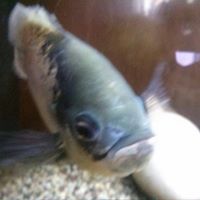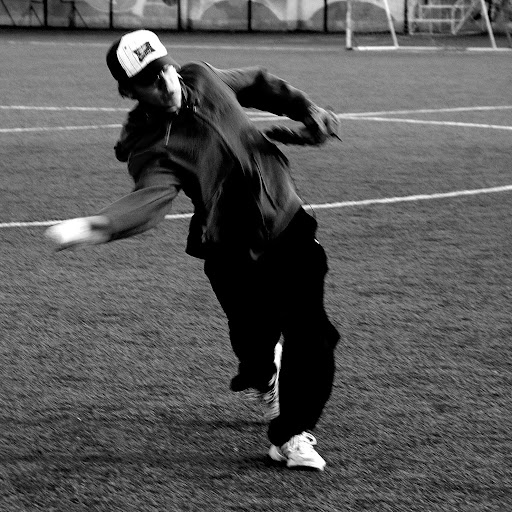Yibo Zhang
age ~53
from Cypress, TX
- Also known as:
-
- Yitao Zhang
- Chen Y Zhang
- Yibo Z Chen
- Zhang Yibo
- Hanz F Kathy
Yibo Zhang Phones & Addresses
- Cypress, TX
- Austin, TX
- Irvine, CA
- Houston, TX
- Missouri City, TX
- Tulsa, OK
- Kingwood, TX
- Solon, OH
- Plano, TX
- Garland, TX
Name / Title
Company / Classification
Phones & Addresses
Director
GENERAL ENERGY TECHNOLOGY INC
4102 Laurel Wood Cir, Missouri City, TX 77459
Resumes

Yibo Zhang
view source
Los Angeles Film School
view sourceWork:
Los Angeles Film School

Yibo Zhang
view sourceLocation:
United States
Us Patents
-
Magnetically Modulated Computational Cytometer And Methods Of Use
view source -
US Patent:20220260481, Aug 18, 2022
-
Filed:Jul 2, 2020
-
Appl. No.:17/621979
-
Inventors:- Oakland CA, US
Aniruddha Ray - Los Angeles CA, US
Yibo Zhang - Los Angeles CA, US
Dino Di Carlo - Los Angeles CA, US -
Assignee:THE REGENTS OF THE UNIVERSITY OF CALIFORNIA - Oakland CA
-
International Classification:G01N 15/14
B03C 1/01
B03C 1/02
G06V 20/69
G06V 10/82
G06V 10/147
G03H 1/00 -
Abstract:A computational cytometer operates using magnetically modulated lensless speckle imaging, which introduces oscillatory motion to magnetic bead-conjugated rare cells of interest through a periodic magnetic force and uses lensless time-resolved holographic speckle imaging to rapidly detect the target cells in three-dimensions (3D). Detection specificity is further enhanced through a deep learning-based classifier that is based on a densely connected pseudo-3D convolutional neural network (P3D CNN), which automatically detects rare cells of interest based on their spatio-temporal features under a controlled magnetic force. This compact, cost-effective and high-throughput computational cytometer can be used for rare cell detection and quantification in bodily fluids for a variety of biomedical applications.
-
System And Method For Deep Learning-Based Color Holographic Microscopy
view source -
US Patent:20220206434, Jun 30, 2022
-
Filed:Apr 21, 2020
-
Appl. No.:17/604416
-
Inventors:- Oakland CA, US
Yair Rivenson - Los Angeles CA, US
Tairan Liu - Los Angeles CA, US
Yibo Zhang - Los Angeles CA, US -
Assignee:THE REGENTS OF THE UNIVERSITY OF CALIFORNIA - Oakland CA
-
International Classification:G03H 1/08
G03H 1/04
G03H 1/26
G06N 3/08
G06N 3/04 -
Abstract:A method for performing color image reconstruction of a single super-resolved holographic sample image includes obtaining a plurality of sub-pixel shifted lower resolution hologram images of the sample using an image sensor by simultaneous illumination at multiple color channels. Super-resolved hologram intensity images for each color channel are digitally generated based on the lower resolution hologram images. The super-resolved hologram intensity images for each color channel are back propagated to an object plane with image processing software to generate a real and imaginary input images of the sample for each color channel. A trained deep neural network is provided and is executed by image processing software using one or more processors of a computing device and configured to receive the real input image and the imaginary input image of the sample for each color channel and generate a color output image of the sample.
-
Device And Method For Motility-Based Label-Free Detection Of Motile Objects In A Fluid Sample
view source -
US Patent:20210374381, Dec 2, 2021
-
Filed:Oct 18, 2019
-
Appl. No.:17/285898
-
Inventors:- Oakland CA, US
Yibo Zhang - Los Angeles CA, US
Hatice Ceylan Koydemir - Los Angeles CA, US -
Assignee:THE REGENTS OF THE UNIVERSITY OF CALIFORNIA - Oakland CA
-
International Classification:G06K 9/00
G06K 9/66
G06T 7/20
G01N 15/14
G01N 33/49
G03H 1/00
G03H 1/08 -
Abstract:Systems and methods for detecting motile objects (e.g., parasites) in a fluid sample by utilizing the locomotion of the parasites as a specific biomarker and endogenous contrast mechanism. The imaging platform includes one or more substantially optically transparent sample holders. The imaging platform has a moveable scanning head containing light sources and corresponding image sensor(s) associated with the light source(s). The light source(s) are directed at a respective sample holder containing a sample and the respective image sensor(s) are positioned below a respective sample holder to capture time-varying holographic speckle patterns of the sample contained in the sample holder. The image sensor(s). A computing device is configured to receive time-varying holographic speckle pattern image sequences obtained by the image sensor(s). The computing device generates a 3D contrast map of motile objects within the sample use deep learning-based classifier software to identify the motile objects.
-
Method And System For Pixel Super-Resolution Of Multiplexed Holographic Color Images
view source -
US Patent:20200393793, Dec 17, 2020
-
Filed:Aug 28, 2020
-
Appl. No.:17/006057
-
Inventors:- Oakland CA, US
Yichen Wu - Los Angeles CA, US
Yibo Zhang - Los Angeles CA, US
Wei Luo - Los Angeles CA, US -
Assignee:THE REGENTS OF THE UNIVERSITY OF CALIFORNIA - Oakland CA
-
International Classification:G03H 1/04
H04N 9/04
G03H 1/00
G03H 1/22
G06T 3/40
H04N 5/232
H04N 9/68
H04N 9/73 -
Abstract:A method of generating a color image of a sample includes obtaining a plurality of low resolution holographic images of the sample using a color image sensor, the sample illuminated simultaneously by light from three or more distinct colors, wherein the illuminated sample casts sample holograms on the image sensor and wherein the plurality of low resolution holographic images are obtained by relative x, y, and z directional shifts between sample holograms and the image sensor. Pixel super-resolved holograms of the sample are generated at each of the three or more distinct colors. De-multiplexed holograms are generated from the pixel super-resolved holograms. Phase information is retrieved from the de-multiplexed holograms using a phase retrieval algorithm to obtain complex holograms. The complex hologram for the three or more distinct colors is digitally combined and back-propagated to a sample plane to generate the color image.
-
Method And Device For High-Resolution Color Imaging Using Merged Images From Holographic And Lens-Based Devices
view source -
US Patent:20200310100, Oct 1, 2020
-
Filed:May 9, 2017
-
Appl. No.:16/300539
-
Inventors:- Oakland CA, US
Yibo Zhang - Los Angeles CA, US
Yichen Wu - Los Angeles CA, US -
Assignee:THE REGENTS OF THE UNIVERSITY OF CALIFORNIA - Oakland CA
-
International Classification:G02B 21/36
G03H 1/04
G02B 21/00
G03H 1/08
G06T 5/50 -
Abstract:Methods and systems for generating a high-color-fidelity and high-resolution color image of a sample are disclosed; which fuses or merges a holographic image acquired at a single wavelength with a color-calibrated image taken by a low-magnification lens-based microscope using a wavelet transform based colorization method. A holographic microscope is used to obtain holographic images which are used to computationally reconstruct a high-resolution mono-color holographic image of the sample. A lens-based microscope is used to obtain low resolution color images. A discrete wavelet transform (DWT) is used to generate a final image that merges the low-resolution components from the lens-based color image and the high-resolution components from the high-resolution mono-color holographic image.
-
Method And System For Phase Recovery And Holographic Image Reconstruction Using A Neural Network
view source -
US Patent:20190294108, Sep 26, 2019
-
Filed:Mar 20, 2019
-
Appl. No.:16/359609
-
Inventors:- Oakland CA, US
Yair Rivenson - Los Angeles CA, US
Yichen Wu - Los Angeles CA, US
Yibo Zhang - Los Angeles CA, US
Harun Gunaydin - Clifton Heights PA, US -
Assignee:THE REGENTS OF THE UNIVERSITY OF CALIFORNIA - Oakland CA
-
International Classification:G03H 1/22
G03H 1/04
G06N 3/08 -
Abstract:A method of performing phase retrieval and holographic image reconstruction of an imaged sample includes obtaining a single hologram intensity image of the sample using an imaging device. The single hologram intensity image is back-propagated to generate a real input image and an imaginary input image of the sample with image processing software, wherein the real input image and the imaginary input image contain twin-image and/or interference-related artifacts. A trained deep neural network is provided that is executed by the image processing software using one or more processors and configured to receive the real input image and the imaginary input image of the sample and generate an output real image and an output imaginary image in which the twin-image and/or interference-related artifacts are substantially suppressed or eliminated. In some embodiments, the trained deep neural network simultaneously achieves phase-recovery and auto-focusing significantly extending the DOF of holographic image reconstruction.
-
Method And System For Pixel Super-Resolution Of Multiplexed Holographic Color Images
view source -
US Patent:20190286053, Sep 19, 2019
-
Filed:May 10, 2017
-
Appl. No.:16/300546
-
Inventors:- Oakland CA, US
Yichen Wu - Los Angeles CA, US
Yibo Zhang - Los Angeles CA, US
Wei Luo - Los Angeles CA, US -
Assignee:THE REGENTS OF THE UNIVERSITY OF CALIFORNIA - Oakland CA
-
International Classification:G03H 1/04
G03H 1/22
G03H 1/00
H04N 9/04
G06T 3/40
H04N 5/232
H04N 9/68
H04N 9/73 -
Abstract:A method of generating a color image of a sample includes obtaining a plurality of low resolution holographic images of the sample using a color image sensor, the sample illuminated simultaneously by light from three or more distinct colors, wherein the illuminated sample casts sample holograms on the image sensor and wherein the plurality of low resolution holographic images are obtained by relative x, y, and z directional shifts between sample holograms and the image sensor. Pixel super-resolved holograms of the sample are generated at each of the three or more distinct colors. De-multiplexed holograms are generated from the pixel super-resolved holograms. Phase information is retrieved from the de-multiplexed holograms using a phase retrieval algorithm to obtain complex holograms. The complex hologram for the three or more distinct colors is digitally combined and back-propagated to a sample plane to generate the color image.
-
Device And Method For Iterative Phase Recovery Based On Pixel Super-Resolved On-Chip Holography
view source -
US Patent:20170220000, Aug 3, 2017
-
Filed:Jul 31, 2015
-
Appl. No.:15/500880
-
Inventors:- Oakland CA, US
Alon Greenbaum - West Hollywood CA, US
Yibo Zhang - Los Angeles CA, US
Alborz Feizi - Los Angeles CA, US
Wei Luo - Los Angeles CA, US -
Assignee:THE REGENTS OF THE UNIVERSITY OF CALIFORNIA - Oakland CA
-
International Classification:G03H 1/00
G03H 1/08
H04N 5/232
G03H 1/04
G01N 15/14
H04N 5/225 -
Abstract:A method for lens-free imaging of a sample or objects within the sample uses multi-height iterative phase retrieval and rotational field transformations to perform wide FOV imaging of pathology samples with clinically comparable image quality to a benchtop lens-based microscope. The solution of the transport-of-intensity (TIE) equation is used as an initial guess in the phase recovery process to speed the image recovery process. The holographically reconstructed image can be digitally focused at any depth within the object FOV (after image capture) without the need for any focus adjustment, and is also digitally corrected for artifacts arising from uncontrolled tilting and height variations between the sample and sensor planes. In an alternative embodiment, a synthetic aperture approach is used with multi-angle iterative phase retrieval to perform wide FOV imaging of pathology samples and increase the effective numerical aperture of the image.

Yibo Zhang
view source
Yibo Zhang
view source
Yibo Zhang
view source
Yibo Zhang
view source
Zhang Yibo
view source
Yibo Zhang
view source
Yibo Zhang
view source
YIbo Zhang
view sourceYoutube
Myspace
Googleplus

Yibo Zhang

Yibo Zhang

Yibo Zhang
Get Report for Yibo Zhang from Cypress, TX, age ~53




